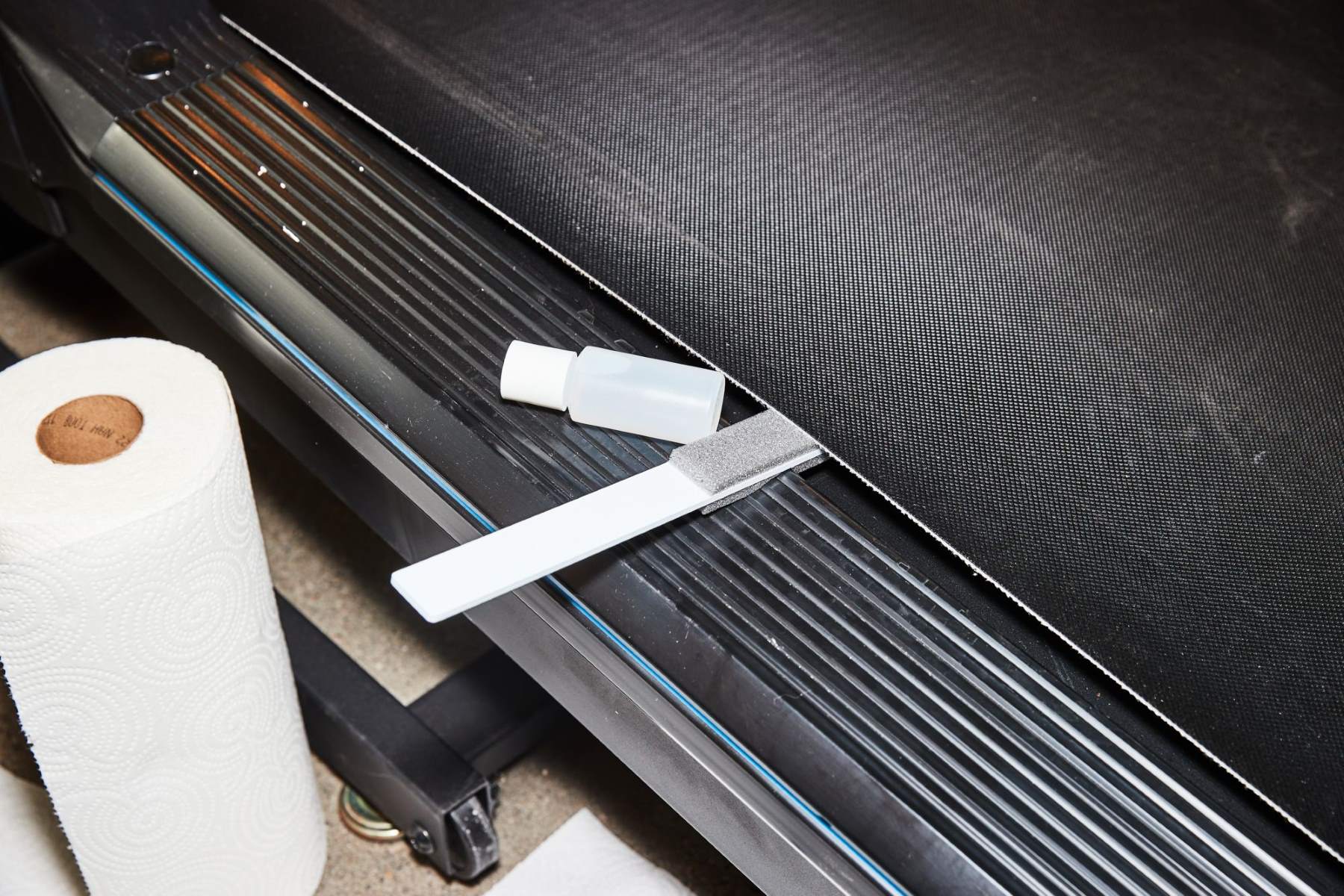Home>Misc>Featured>How Long After Appendectomy Can I Workout


Featured
How Long After Appendectomy Can I Workout
Published: August 12, 2023
Looking to get back to your fitness routine after an appendectomy? Discover how long you should wait before working out and when you can start exercising again. Featured article.
Introduction
Undergoing an appendectomy, the surgical removal of the appendix, is a common procedure that can be necessary to treat appendicitis, a condition characterized by inflammation and infection of the appendix. After undergoing surgery, it is natural to have concerns about resuming physical activities, including workouts. The recovery period following an appendectomy is crucial for allowing your body to heal properly.
While every individual’s healing process may vary, there are general guidelines to follow regarding when it is safe to resume workouts after an appendectomy. It is essential to consider various factors such as the type of surgery performed, the individual’s overall health, and the advice of their healthcare provider.
In this article, we will explore the factors to consider, the typical recovery period, when it is safe to return to physical activity, and the types of workouts to consider. It is important to note that this information should serve as a guide, and it is always recommended to consult with your healthcare provider for personalized advice regarding your specific situation.
Now, let’s delve into the details of what you need to know about resuming workouts after an appendectomy.
Factors to Consider
When determining when to resume workouts after an appendectomy, there are several important factors to consider:
- Type of Surgery: The method used to remove the appendix can affect the recovery time and the level of physical activity that is safe to engage in. Laparoscopic surgery, which involves smaller incisions and a shorter recovery period, may allow for a quicker return to exercise compared to open surgery, which involves a larger incision.
- Individual Healing Rate: Each person’s body heals at a different rate, and it is crucial to listen to your body’s signals. It is important not to rush into intense physical activities, even if you feel well. Pushing yourself too soon can hinder the healing process and potentially lead to complications.
- Overall Health: Factors such as age, pre-existing medical conditions, and overall physical fitness can impact the recovery process. Your healthcare provider will consider these factors when providing guidance on when it is safe to resume your workout routine.
- Postoperative Complications: In some cases, individuals may experience postoperative complications such as infections or delayed wound healing. It is crucial to address these issues before considering returning to physical activity to ensure you do not exacerbate any existing problems.
- Consultation with Healthcare Provider: It is essential to seek the advice of your healthcare provider before resuming workouts after an appendectomy. They will assess your individual situation, monitor your healing progress, and provide recommendations based on your specific needs.
Considering these factors will help determine when it is safe for you to resume physical activity post-appendectomy. It is important to prioritize your health and listen to the guidance provided by your healthcare professional.
Recovery Period
The recovery period after an appendectomy can vary depending on the individual and the specific circumstances surrounding the surgery. Generally, it takes about 4 to 6 weeks for the body to heal fully. During this time, your body needs rest and care to ensure proper healing and minimize the risk of complications.
Immediately after the surgery, you will likely stay in the hospital for a day or two for monitoring. Your healthcare provider will provide instructions on wound care, pain management, and any necessary medications. It is crucial to follow these instructions closely for a smooth recovery.
In the first week or two post-surgery, it is normal to experience discomfort, swelling, and bruising in the abdominal area. It is essential to avoid strenuous activities, heavy lifting, and intense workouts during this initial healing period. Focusing on rest, light walking, and gentle movements can aid in the healing process without putting undue strain on your body.
As the weeks progress, you may gradually increase your activity level under the guidance of your healthcare provider. Slowly incorporating gentle exercises and movements can help improve blood circulation and promote healing.
It is important to listen to your body and avoid any pain or discomfort during this recovery period. Pushing yourself too hard too soon can potentially lead to complications or delay the healing process. Communication with your healthcare provider is vital in gauging when it is approprate to progress to more strenuous activities.
Remember, the recovery period is a critical time for your body to heal and regain strength. Patience, rest, and following your healthcare provider’s guidance are essential for a successful recovery.
Return to Physical Activity
Returning to physical activity after an appendectomy should be a gradual and cautious process. It is important to give your body enough time to heal and regain strength before engaging in strenuous workouts or high-impact activities. While the exact timeline may vary depending on individual circumstances, here are some general guidelines to follow:
First Few Weeks: In the initial weeks post-surgery, focus on light activities such as walking or gentle stretching. These low-impact exercises can help maintain mobility and promote blood circulation without placing excessive strain on the abdominal muscles.
Three to Four Weeks: Around this time, with your healthcare provider’s approval, you can start incorporating more moderate exercises. This may include swimming, stationary cycling, or light strength training. However, avoid exercises that put direct pressure on the abdominal area, such as sit-ups or heavy weightlifting.
Four to Six Weeks: By this point, most individuals should be able to resume their regular workout routine gradually. It is crucial to listen to your body and not push yourself too hard too soon. Pay attention to any signs of discomfort, pain, or fatigue and adjust your activities accordingly.
Remember, everyone’s recovery process is unique, and it is essential to consult with your healthcare provider before returning to physical exercise. They will take into account your individual circumstances and provide personalized recommendations for your safe return to physical activity.
In addition to the timeline, pay attention to any specific precautions or limitations provided by your healthcare provider. This could include advice on avoiding certain exercises, gradually increasing intensity, and listening to your body’s cues during workouts. Following these guidelines will help minimize the risk of complications and ensure a smooth transition back to your regular fitness routine.
Always remember to prioritize your health and well-being during your recovery phase. The most important aspect is to gradually reintroduce physical activity and allow your body the necessary time to heal and rebuild strength.
Types of Workouts to Consider
When resuming workouts after an appendectomy, it is crucial to choose activities that are gentle on your body while still providing health benefits. Here are some types of workouts to consider:
- Walking: Walking is a low-impact aerobic exercise that promotes blood circulation and helps maintain mobility. Start with short walks and gradually increase the duration and intensity as your body becomes more comfortable.
- Swimming: Swimming is an excellent option as it is gentle on the joints and provides a full-body workout. The buoyancy of water also reduces impact and strain on your healing abdominal muscles.
- Stationary Cycling: Cycling on a stationary bike is a low-impact cardiovascular exercise that can be easily adjusted to your fitness level. It helps improve endurance and leg strength without putting excessive strain on your abdomen.
- Pilates or Yoga: These low-impact exercises focus on core strength, flexibility, and balance. They can be modified to suit your post-surgery needs, avoiding any movements that strain the abdominal muscles.
- Light Strength Training: Incorporating light weights or resistance bands can help rebuild muscle strength gradually. Focus on exercises that target major muscle groups while avoiding heavy lifting or straining the abdominal area.
- Stretching and Flexibility: Gentle stretching exercises help improve flexibility, enhance range of motion, and prevent muscle stiffness. Include stretching routines before and after workouts to warm up and cool down your muscles.
Remember to always prioritize safety and listen to your body. Don’t try to push yourself too hard too soon, and be mindful of any pain or discomfort. If you experience any unusual symptoms during or after exercise, such as increased pain, swelling, or bleeding, stop the activity and consult your healthcare provider.
Your healthcare provider may provide specific recommendations based on your individual circumstances, so be sure to consult with them before starting any new exercise regimen.
By choosing gentle exercises that gradually increase in intensity, you can support your body’s healing process and gradually regain strength and fitness.
Precautions and Guidelines
When resuming workouts after an appendectomy, it is important to take certain precautions and follow guidelines to ensure a safe and effective recovery. Here are some precautions and guidelines to keep in mind:
- Listen to your body: Pay close attention to any pain, discomfort, or unusual symptoms during and after exercise. If you experience any discomfort, stop the activity and consult your healthcare provider.
- Start slowly and gradually: Begin with low-intensity workouts and slowly progress over time. Avoid high-impact activities, heavy lifting, or exercises that put direct pressure on the abdominal area, such as sit-ups or crunches, during the early stages of recovery.
- Warm-up and cool-down: Prior to each workout, spend a few minutes warming up to prepare your muscles and joints. Similarly, remember to cool down and stretch afterward to improve flexibility and prevent muscle soreness.
- Avoid straining: Refrain from any activity that causes strain or discomfort in the abdominal area. Overexertion can slow down the healing process and potentially lead to complications.
- Follow post-operative instructions: Adhere to the specific post-operative guidelines provided by your healthcare provider regarding wound care, medication, and physical activity restrictions. This will ensure your recovery progresses smoothly.
- Stay hydrated: Drink plenty of water before, during, and after your workouts to stay properly hydrated. Dehydration can negatively impact your energy levels and overall performance.
- Seek guidance from a professional: Consider working with a certified fitness professional or physical therapist who can provide support and guidance in designing a safe and effective workout routine tailored to your post-appendectomy needs.
- Maintain a healthy lifestyle: Beyond exercise, focus on maintaining a well-balanced diet, getting enough restorative sleep, and managing stress levels. These factors contribute to overall recovery and well-being.
It is important to remember that every individual’s recovery process is unique. While these precautions and guidelines serve as a general framework, it is vital to consult with your healthcare provider for personalized advice based on your specific circumstances.
By following these precautions and guidelines, you can help ensure a smooth and successful recovery while safely returning to your regular physical activities.
Conclusion
Returning to workouts after an appendectomy requires patience, caution, and a focus on your overall well-being. While the recovery period may vary for each individual, it is important to prioritize your health and listen to your body’s signals throughout the process.
Factors such as the type of surgery, your healing rate, overall health, and guidance from your healthcare provider all play a role in determining when it is safe to resume physical activity. The recovery period typically ranges from 4 to 6 weeks, during which time you should gradually reintroduce light exercises and movements.
When returning to physical activity after an appendectomy, consider low-impact exercises such as walking, swimming, stationary cycling, and gentle strength training. Always start slowly and gradually increase intensity over time. Remember to listen to your body, warm up and cool down properly, and avoid any activities that strain your healing abdominal muscles.
It is also important to follow precautions and guidelines, including seeking guidance from professionals, staying hydrated, and adhering to post-operative instructions provided by your healthcare provider. By doing so, you can ensure a safe and effective recovery.
Lastly, always consult with your healthcare provider for personalized advice based on your specific circumstances. They can provide guidance tailored to your needs, monitor your healing progress, and offer professional recommendations throughout your recovery journey.
By prioritizing your health, listening to your body, and following professional guidance, you can gradually resume your regular workouts after an appendectomy and regain your strength and fitness in a safe and sustainable manner.








